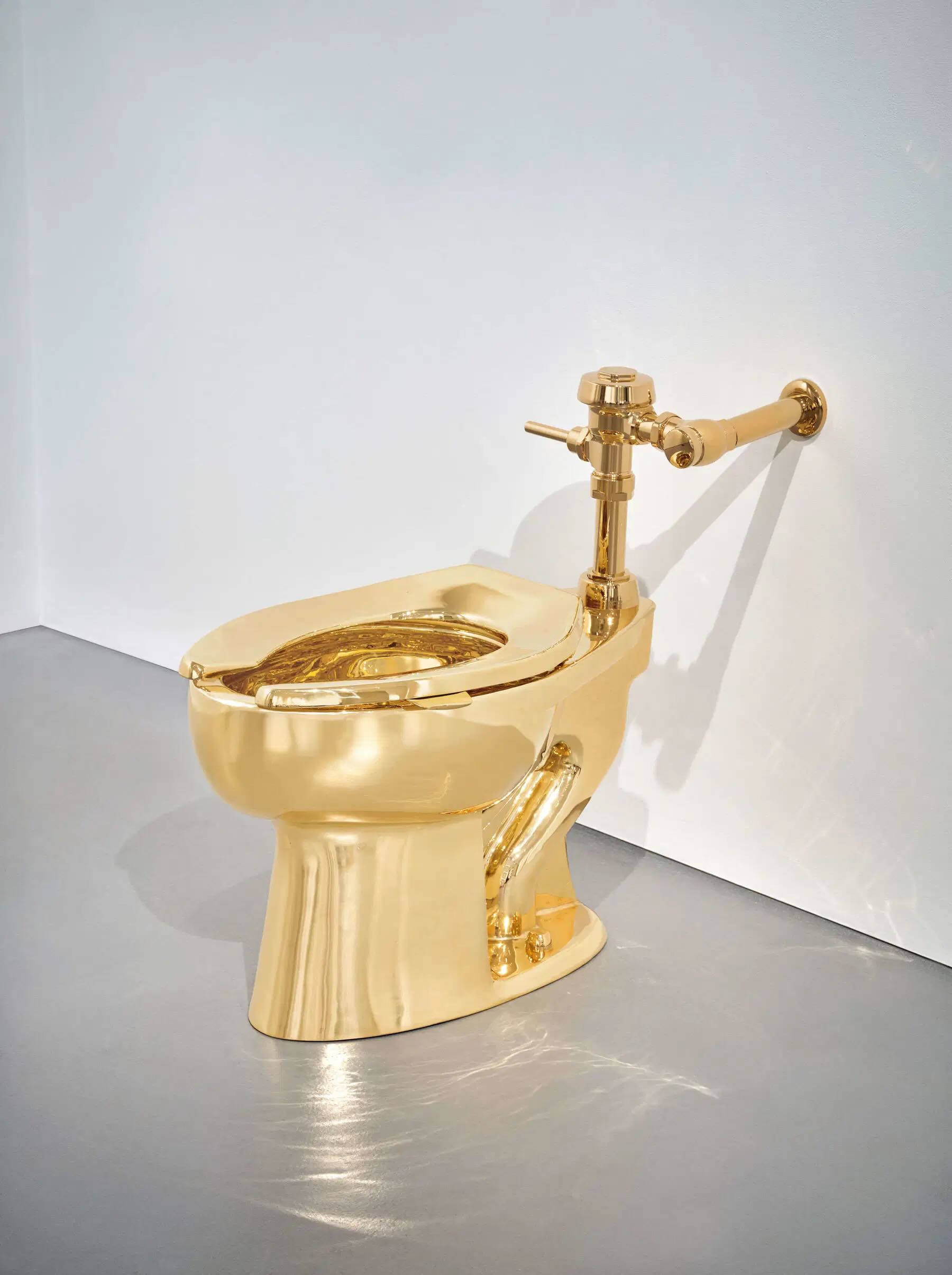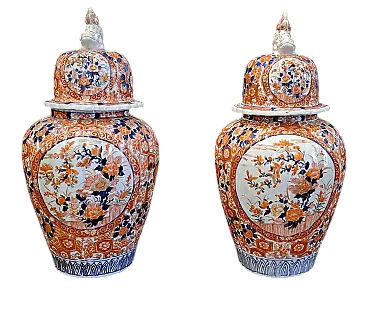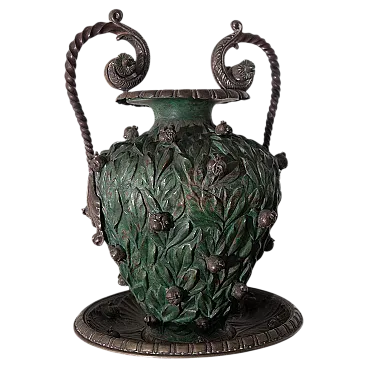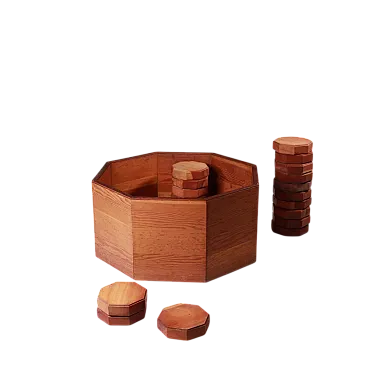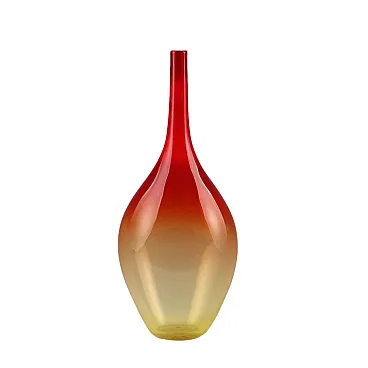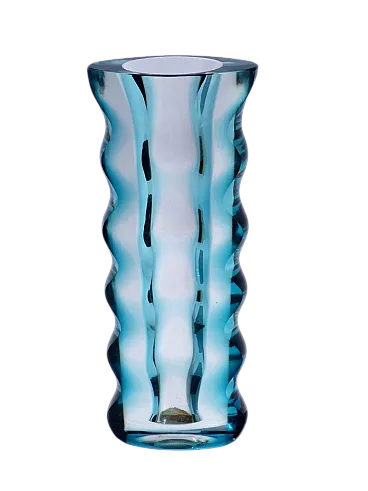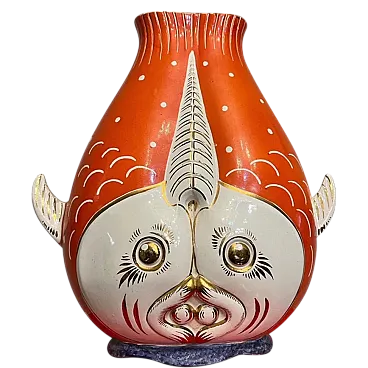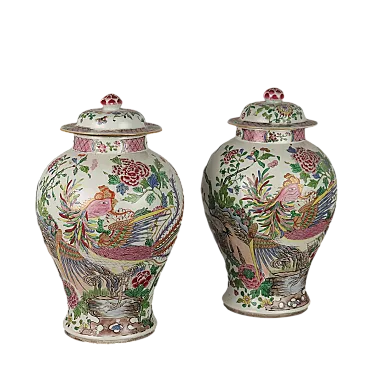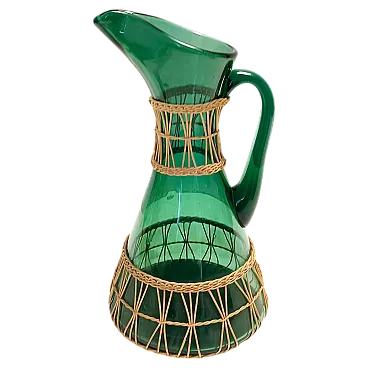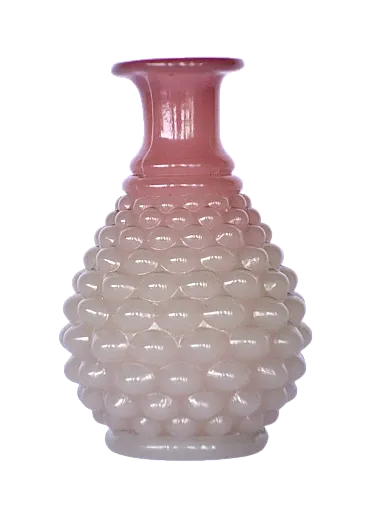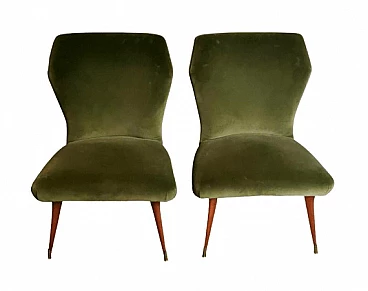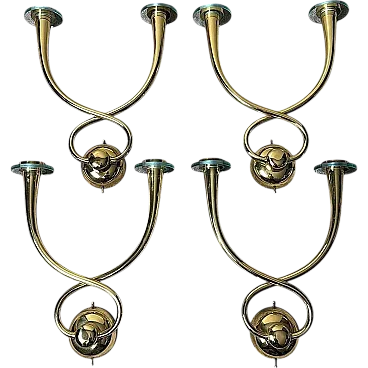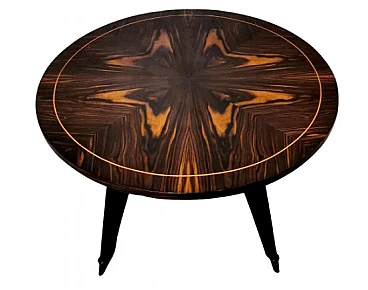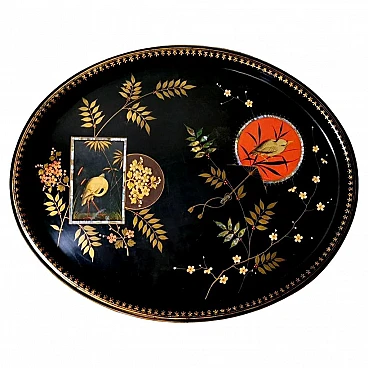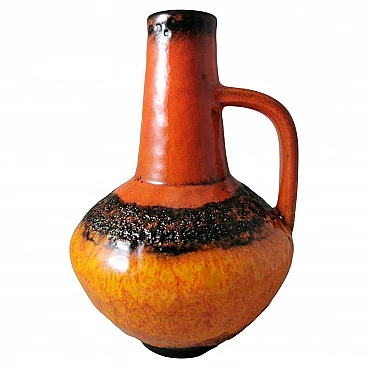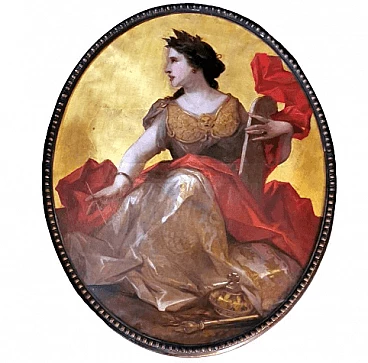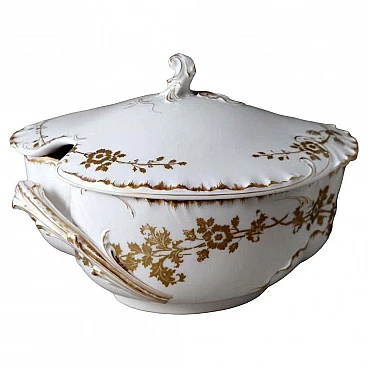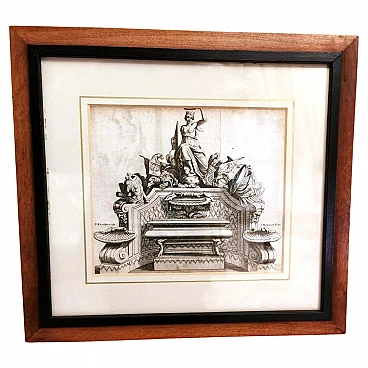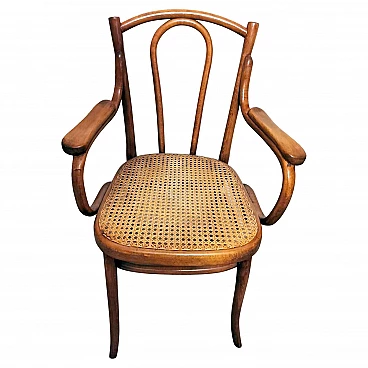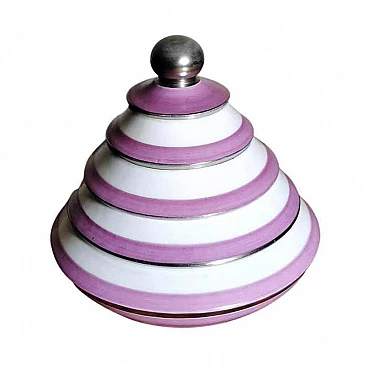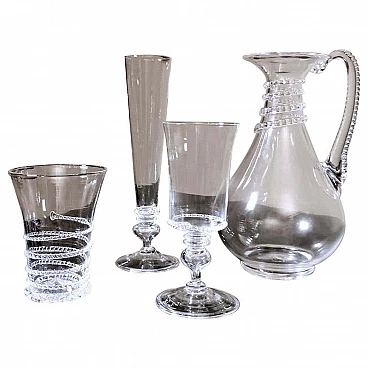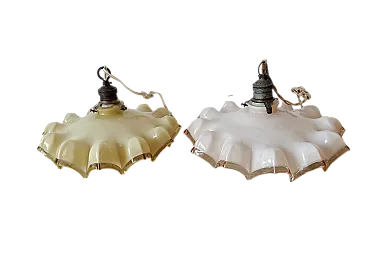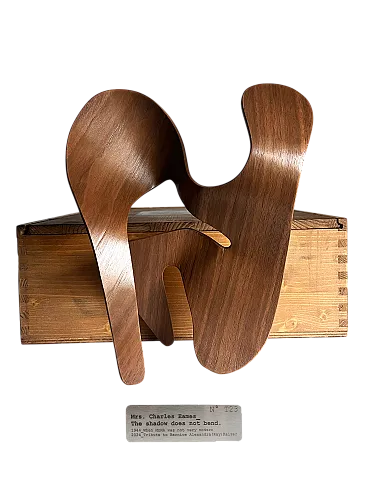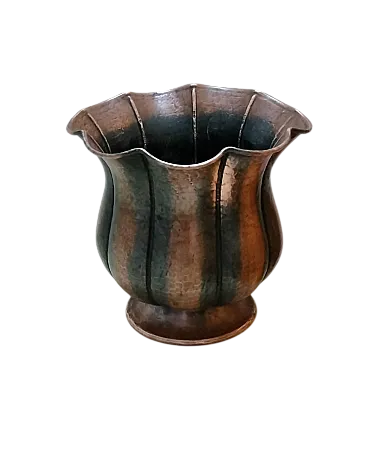Original and distinctive English terracotta cachepot by Gibson & Sons, early 20th century. The shape is simple but well proportioned and outlined. The main colors were carefully and tastefully chosen and matched in a very precise aesthetic and color balance. The inclusion of cute and friendly budgies in the overall design makes for a pleasant and delicate whole. On the bottom of the cachepot we find the mark of one of England's leading earthenware manufacturers, Gibson & Sons, who created this cachepot in 1912 at their Burslem factory in Stoke on Trent, England. The Gibson & Sons company was founded in 1875; it was not until 1905 that it became a corporation. By 1906 the company "employed about five hundred people". The manufacturers of tableware and tea sets were particularly known for producing teapots. Around 1907-1910 they produced the "world's largest teapot," which held 1024 cups of tea. The company had a great development until 1950 when it was absorbed by other companies; the Gibson name finally disappeared from production in 1965. This cachepot followed the traditional production cycle of English earthenware: artisans first chose the highest quality clay, which was shaped into the desired shape by turning and finished by hand; it was then allowed to dry before firing, which was done at a low temperature to harden the clay and make it ready for glazing; colored glazes, consisting of minerals and chemicals, were applied to the object by dipping and with brushes; finally, the glazed piece was fired at a higher temperature to vitrify the clay and melt the glaze on the surface, thus creating a durable and functional ceramic object. This cachepot tells a piece of history in the British earthenware tradition, and with its vibrant colors and strong personality it will stand out in any decor.
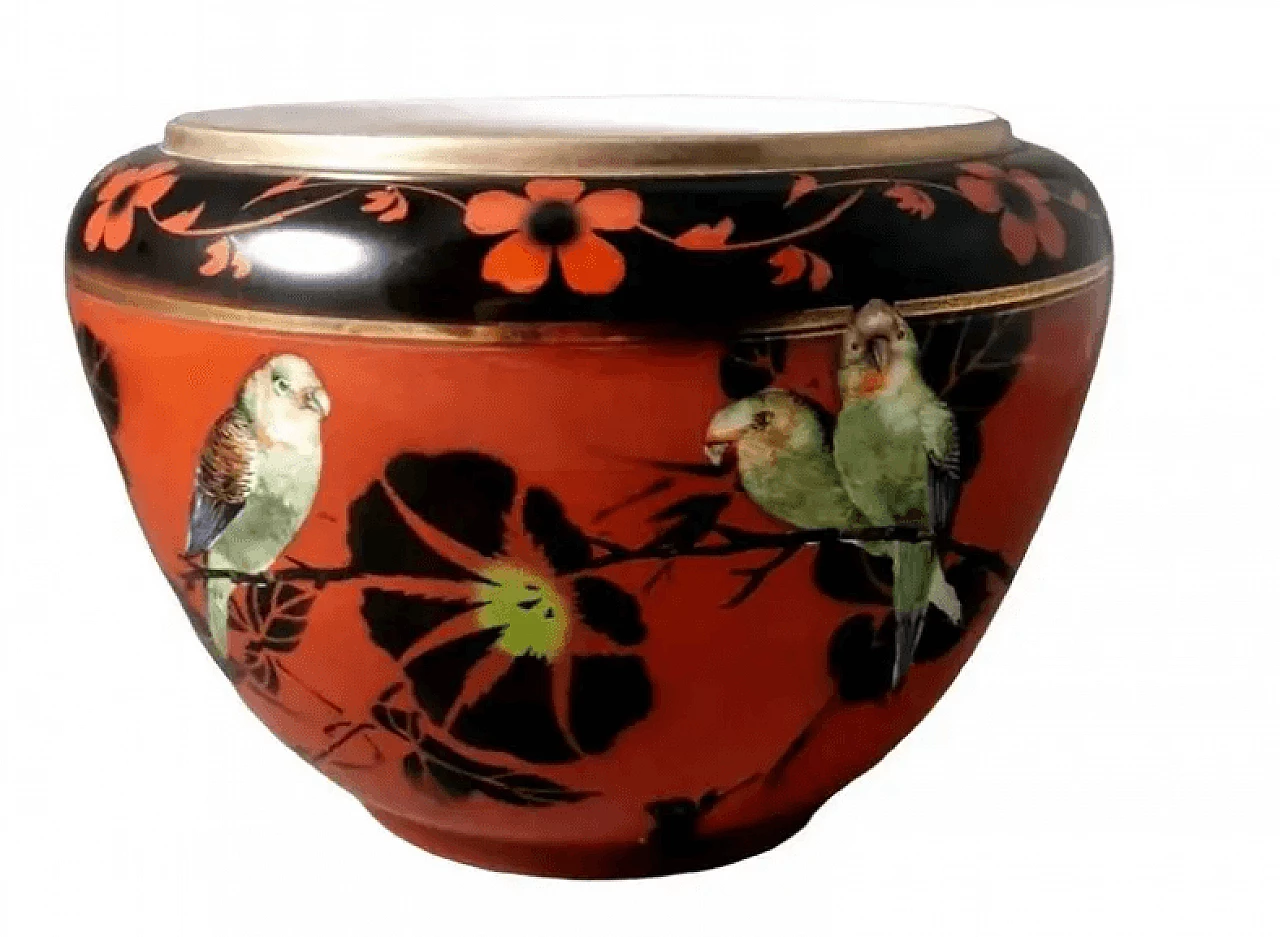
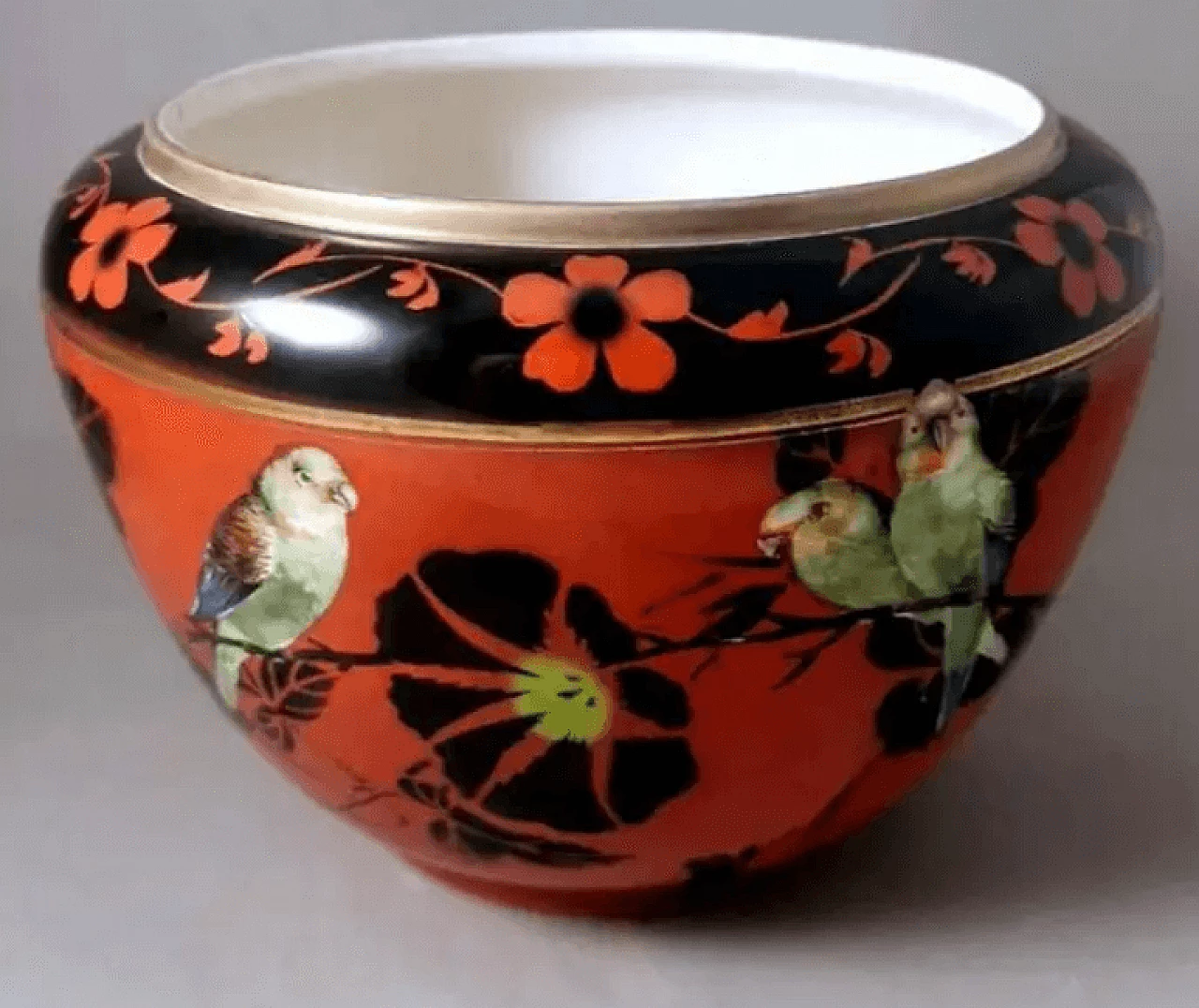
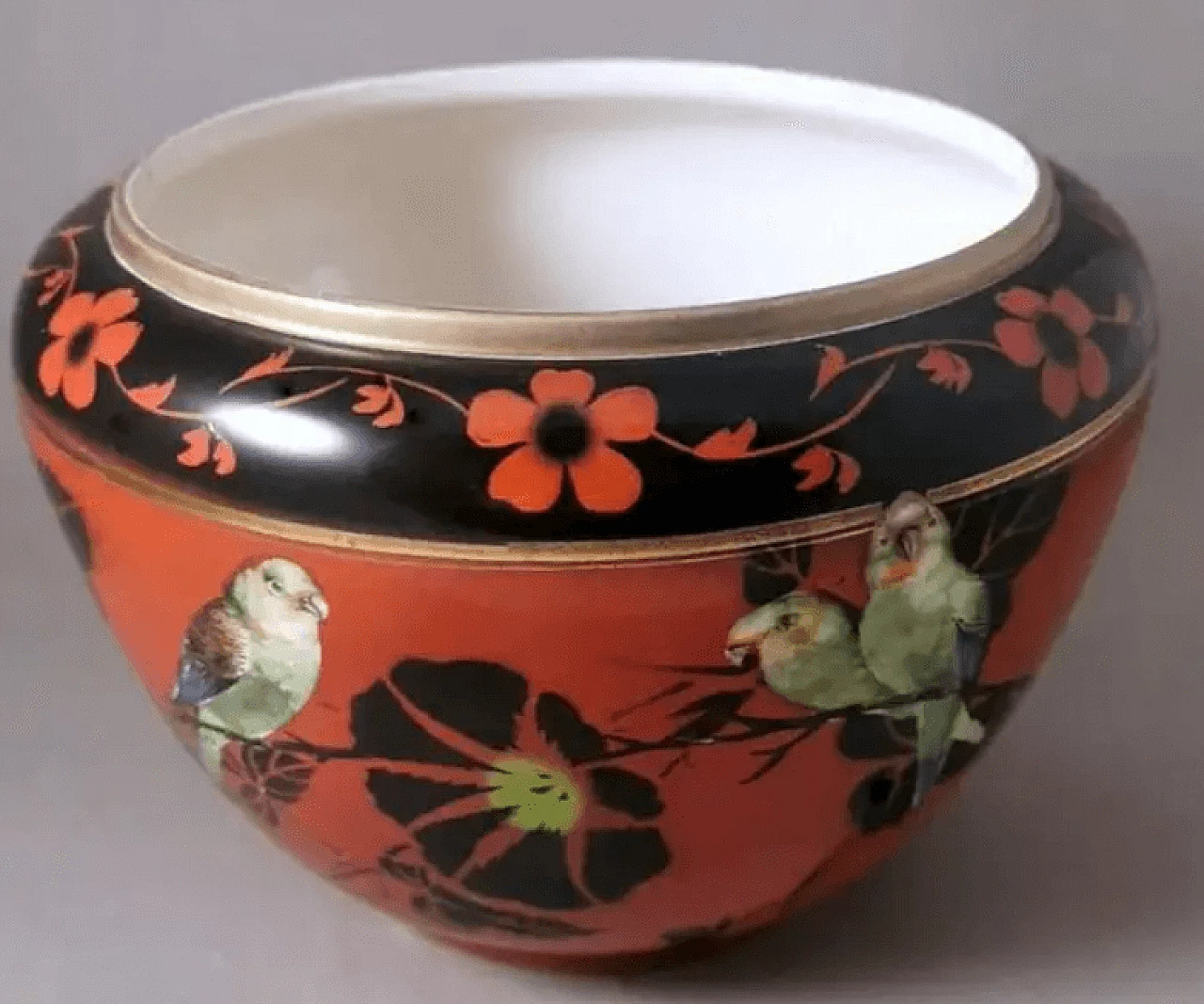
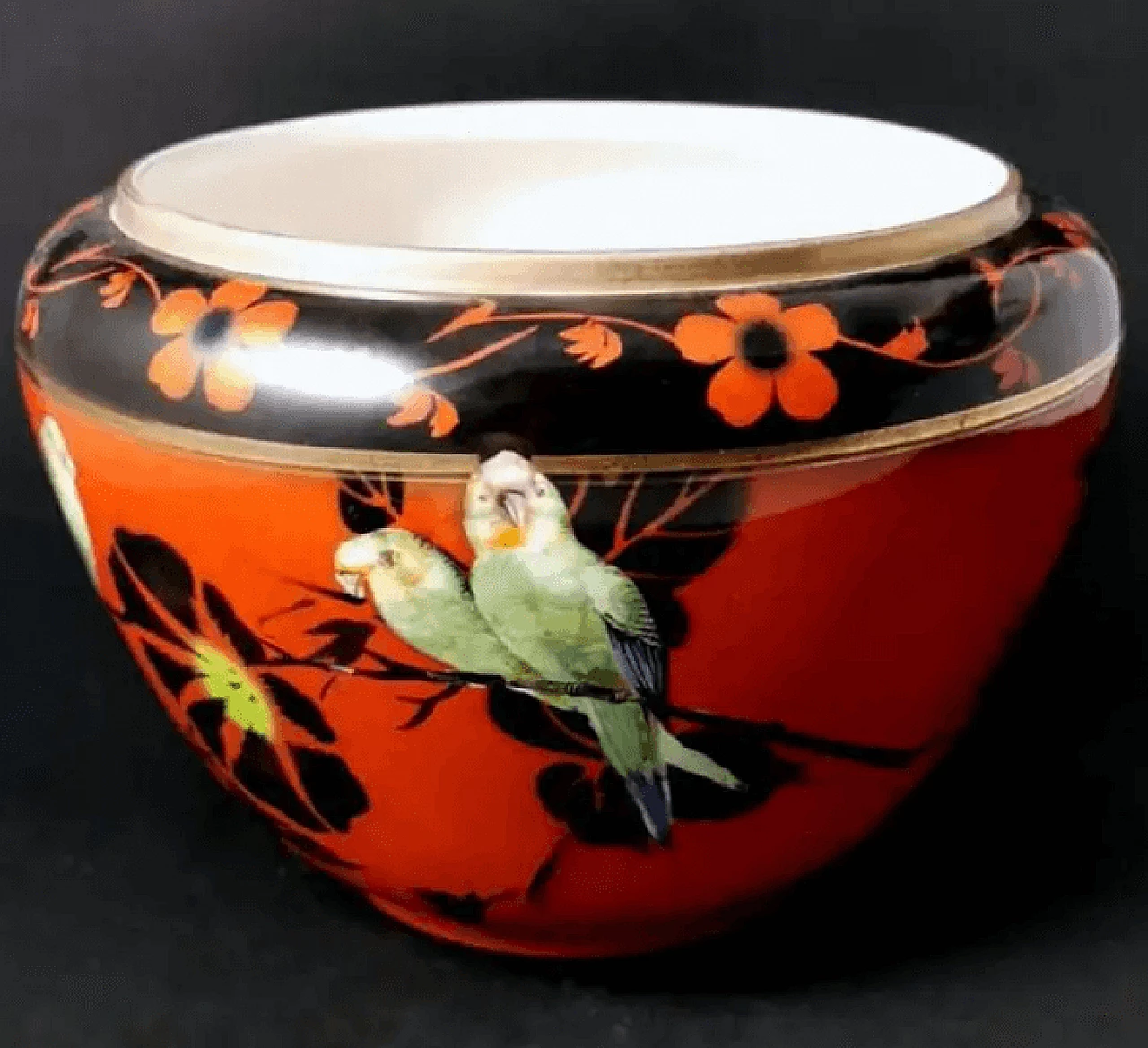
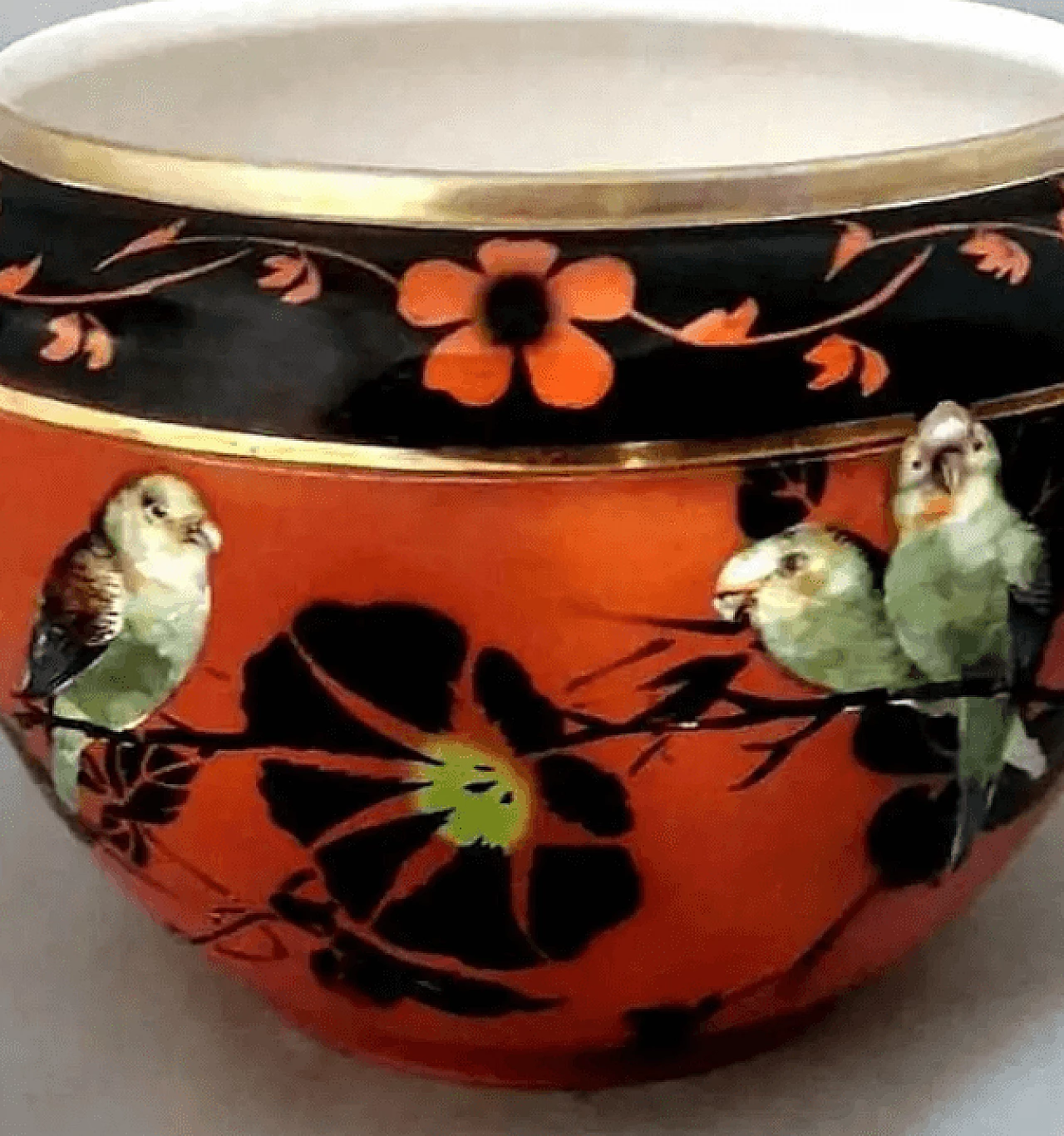

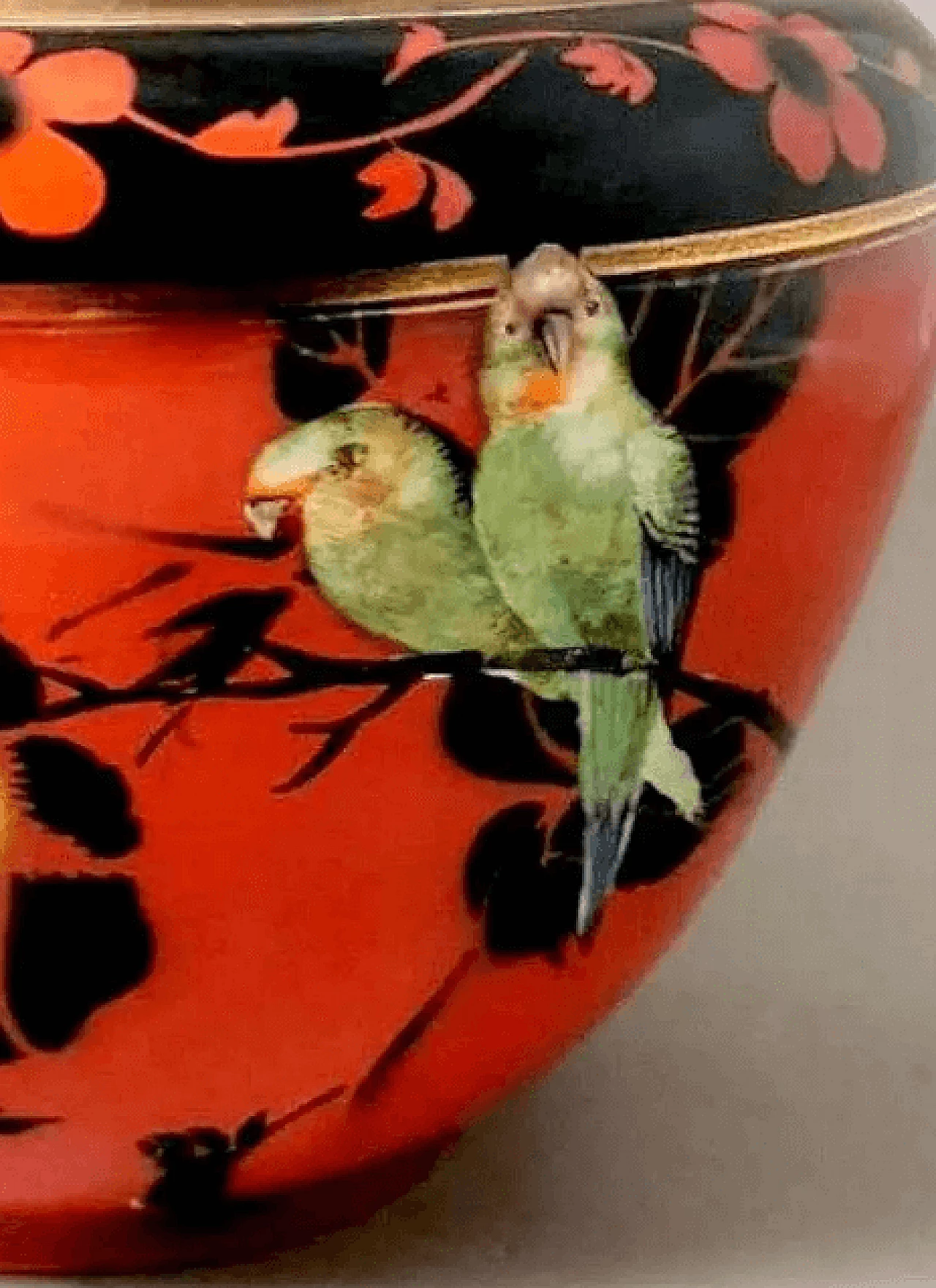
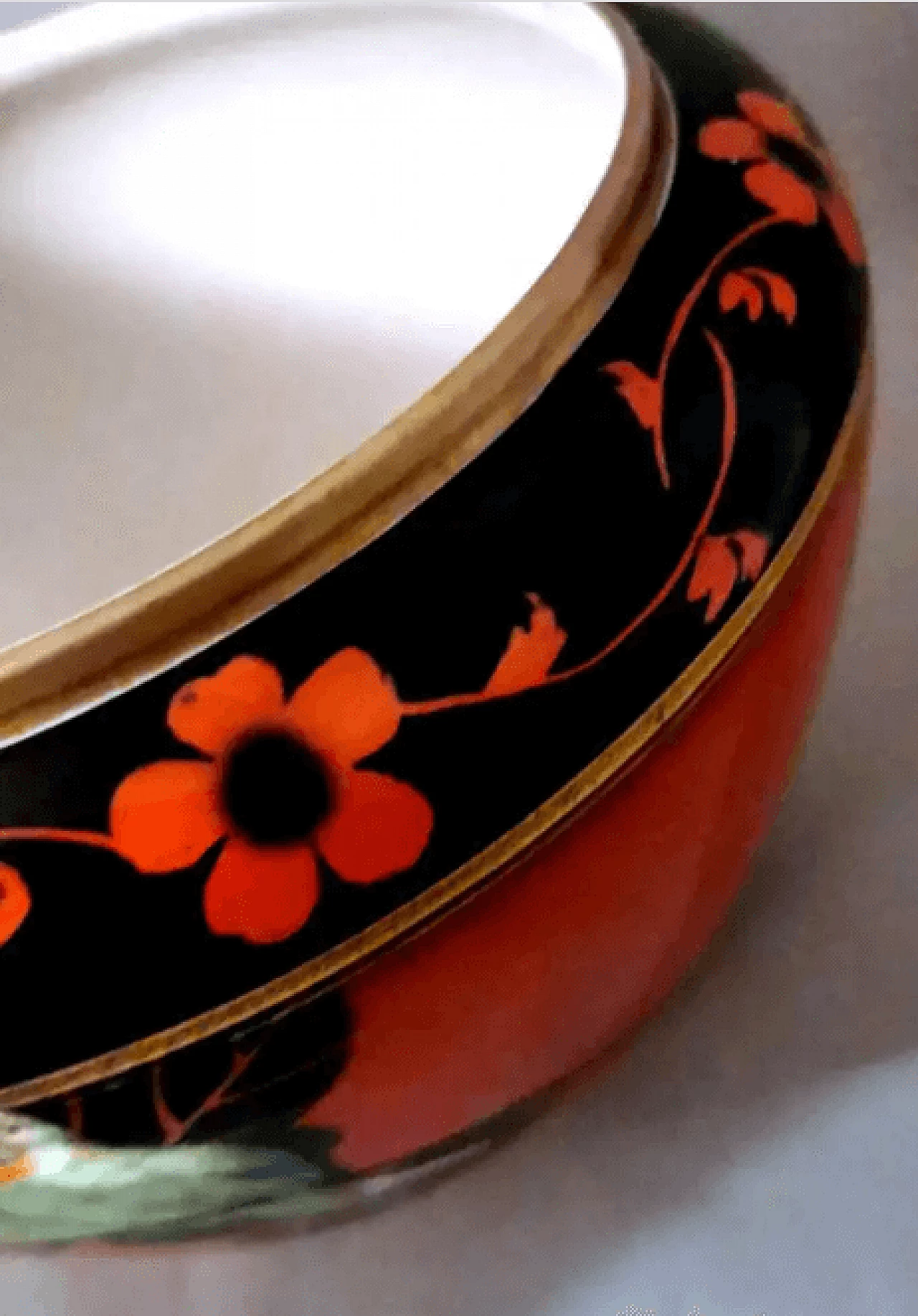

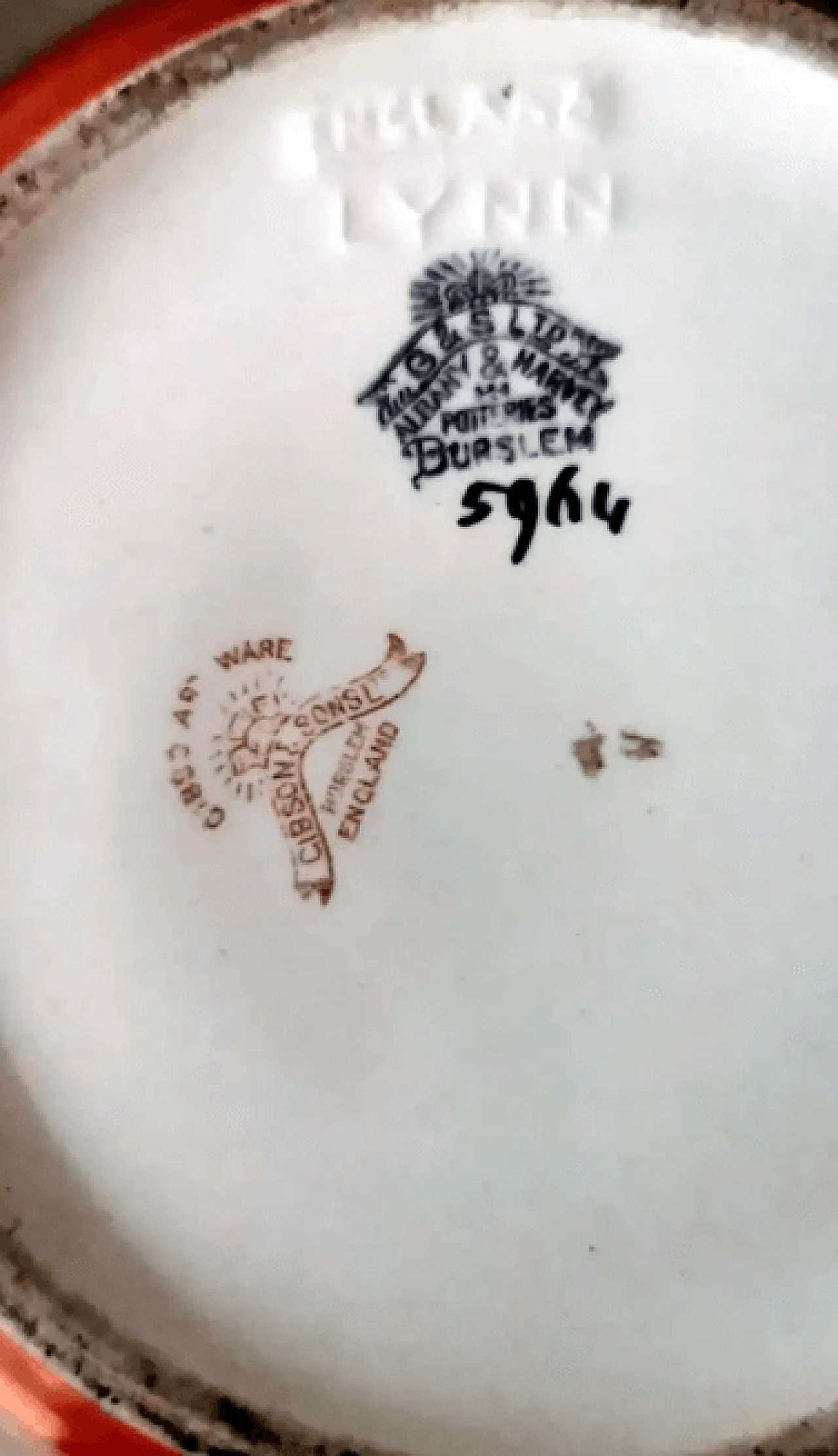
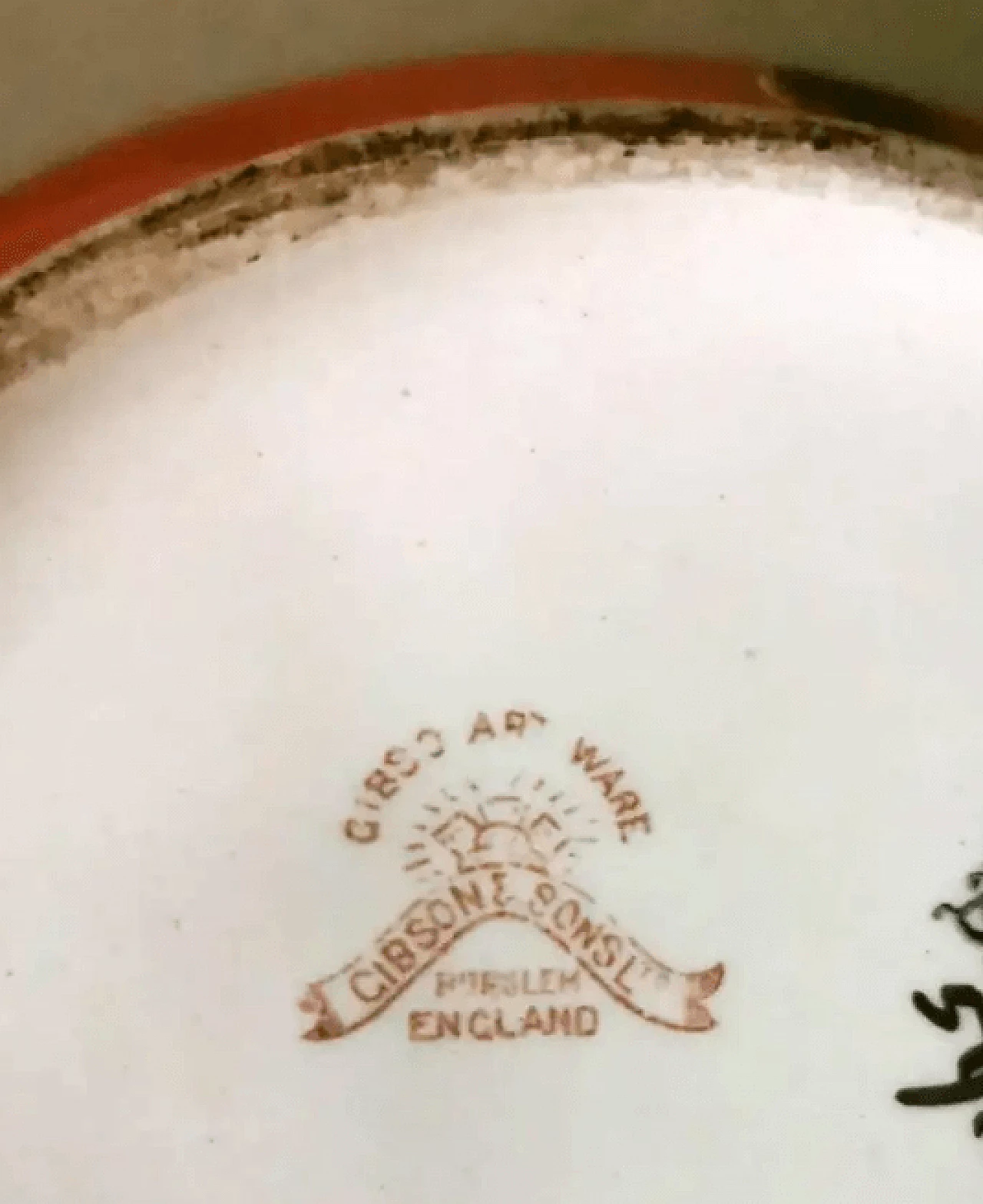
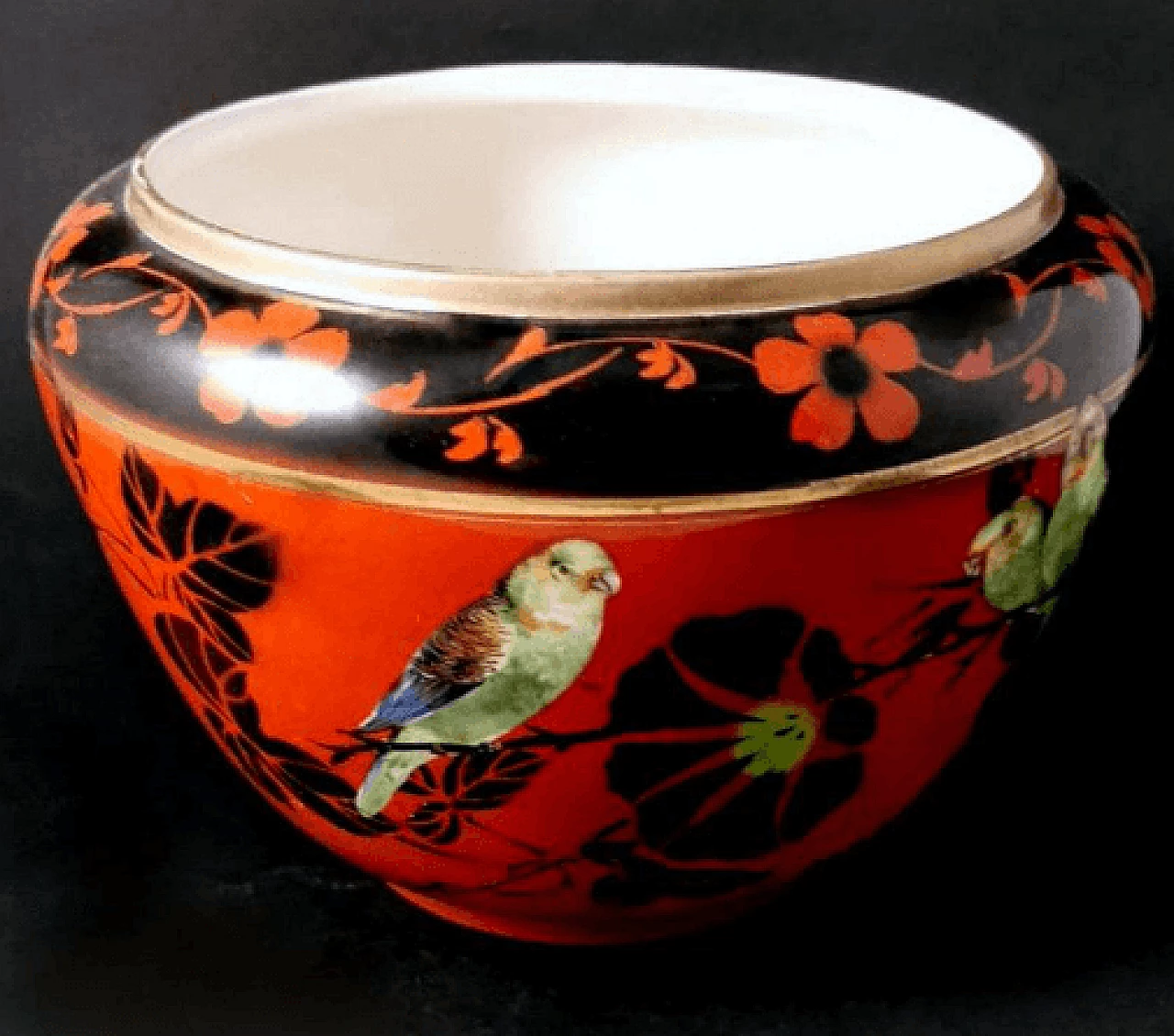
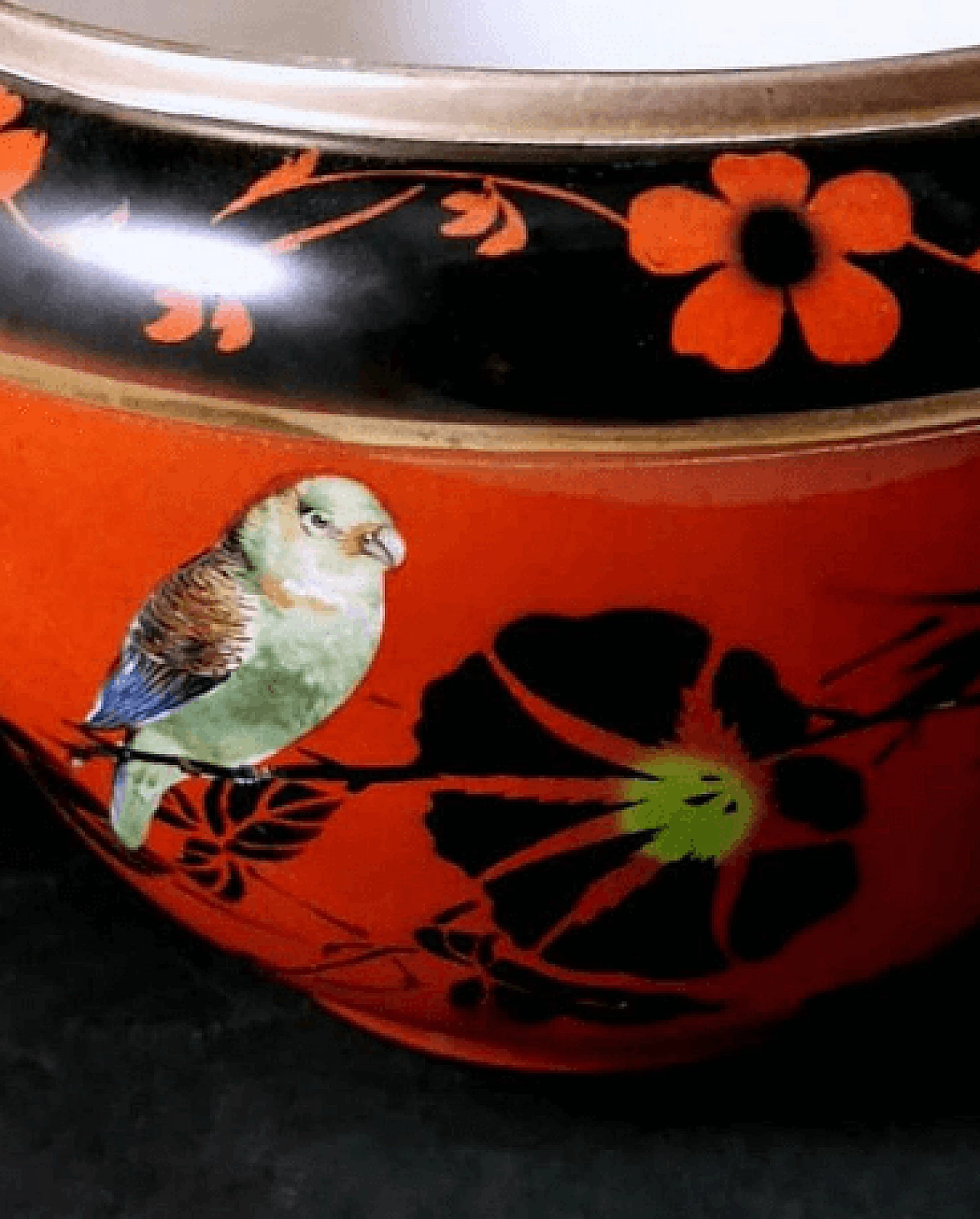
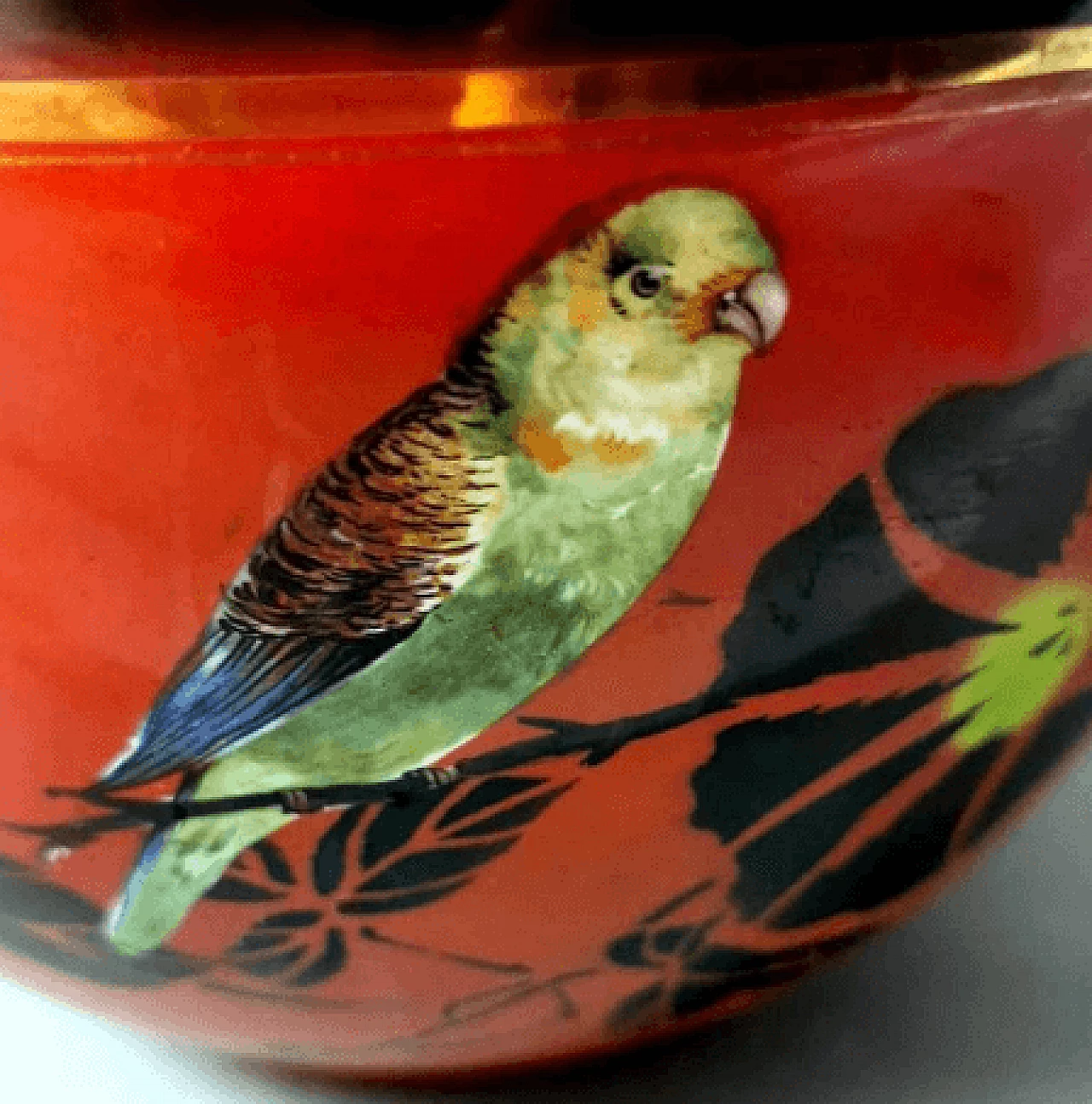
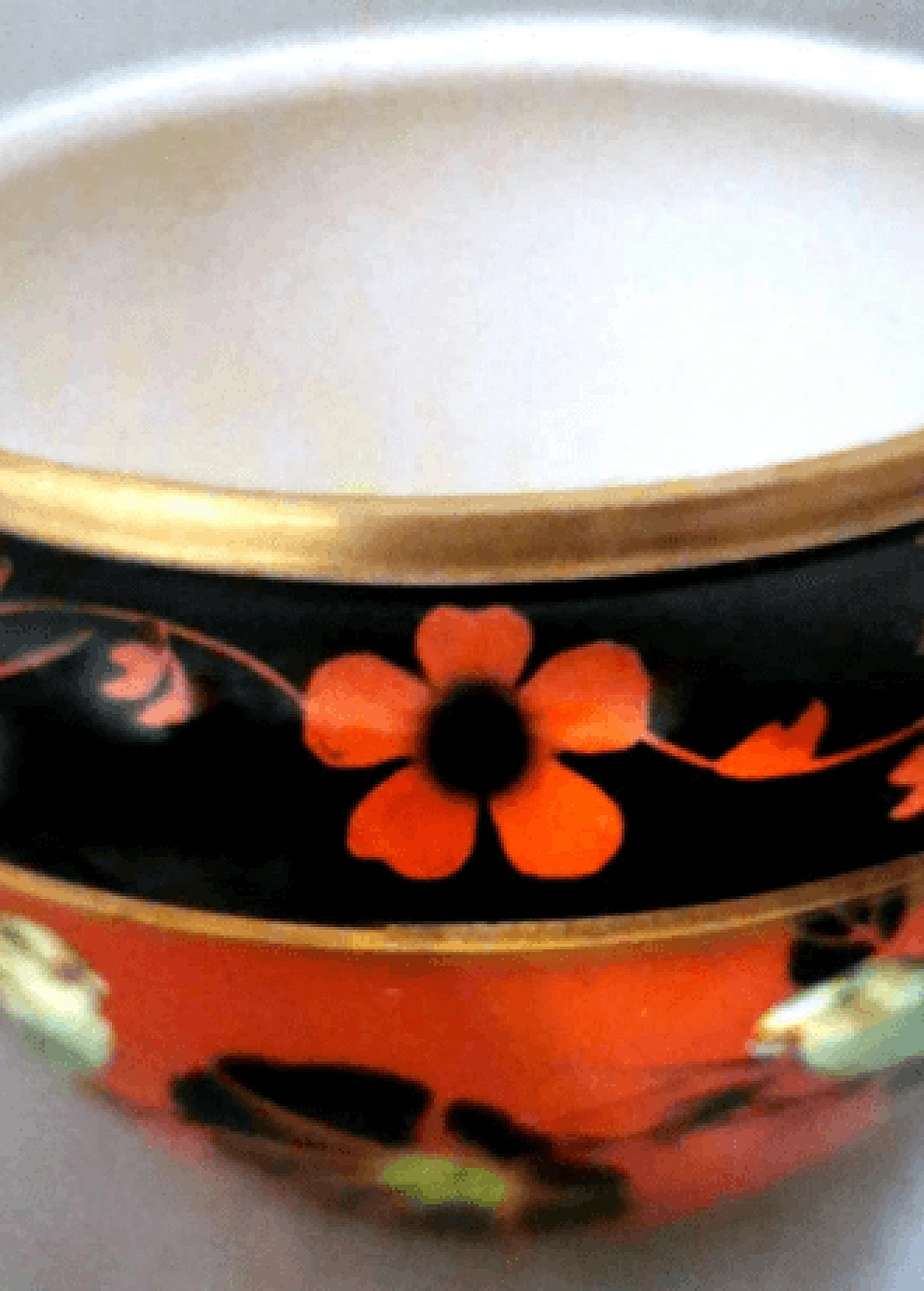
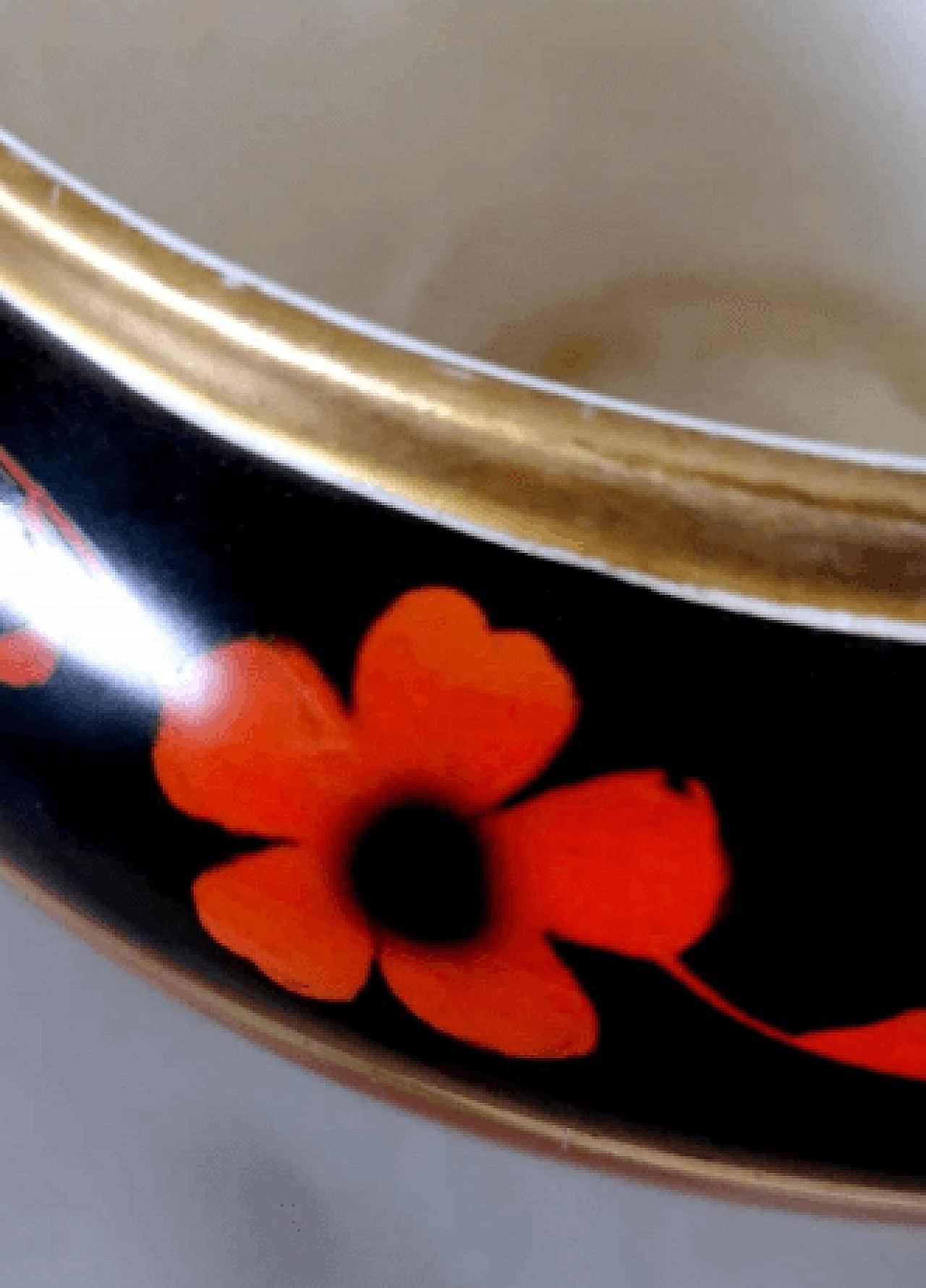
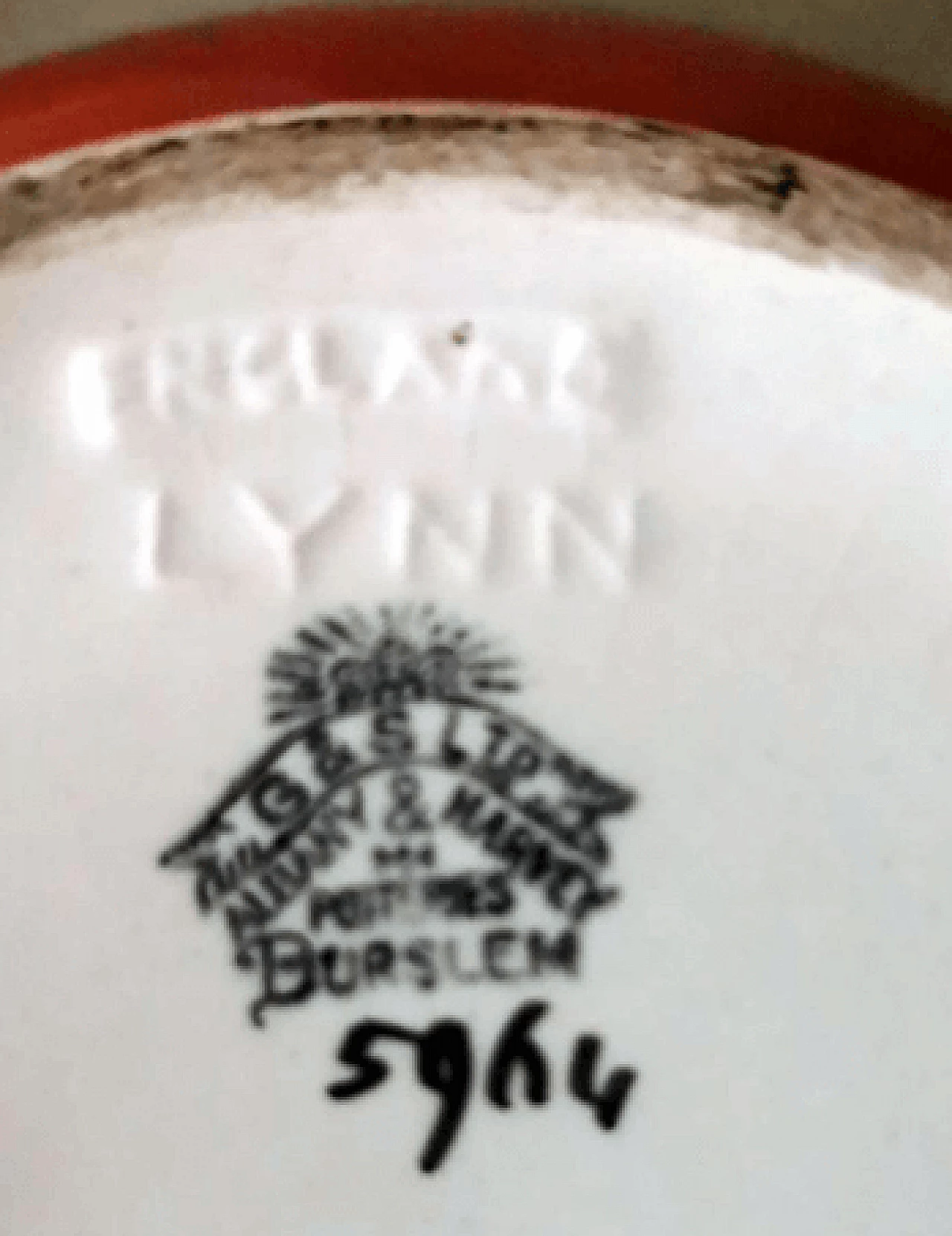
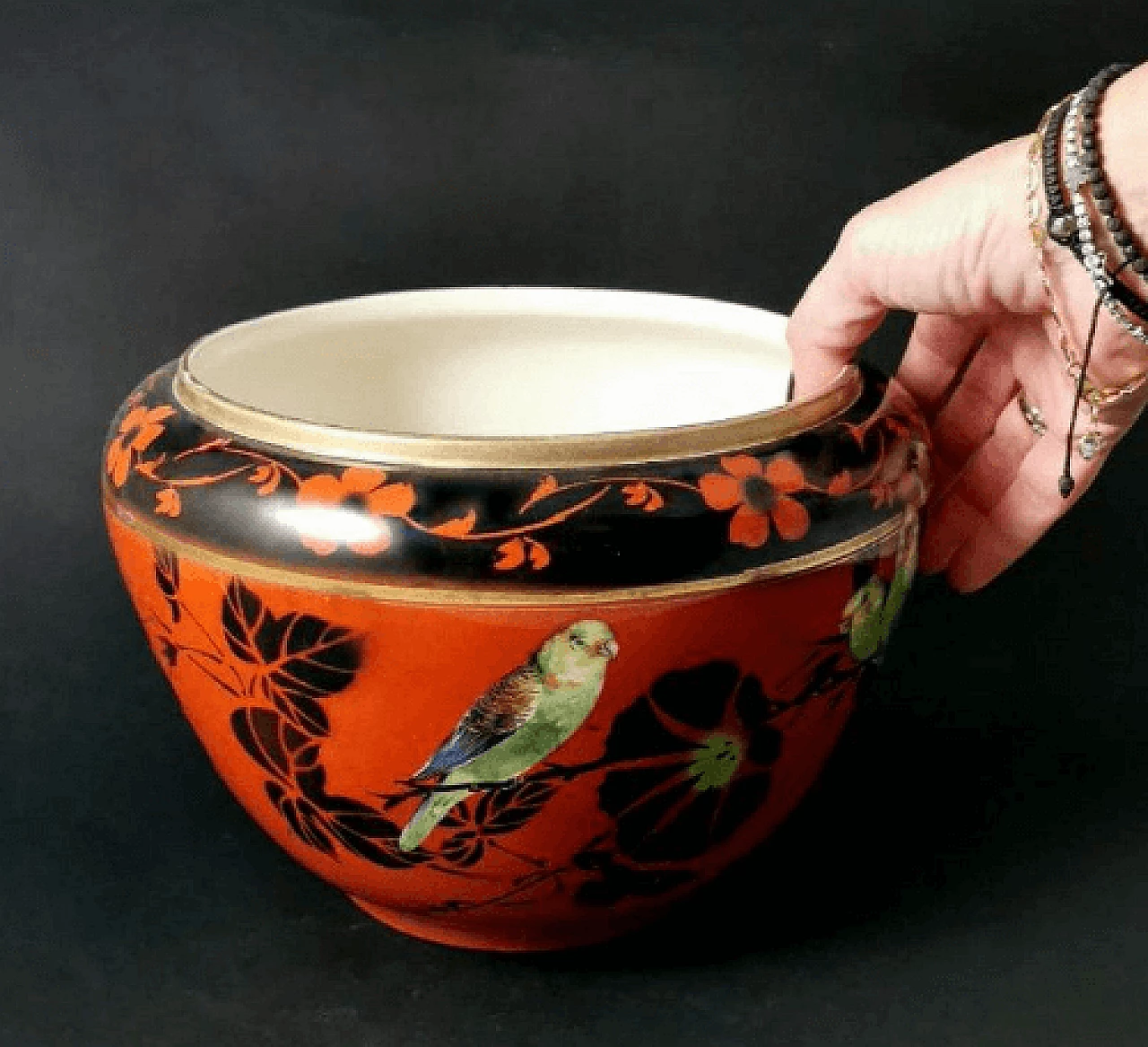
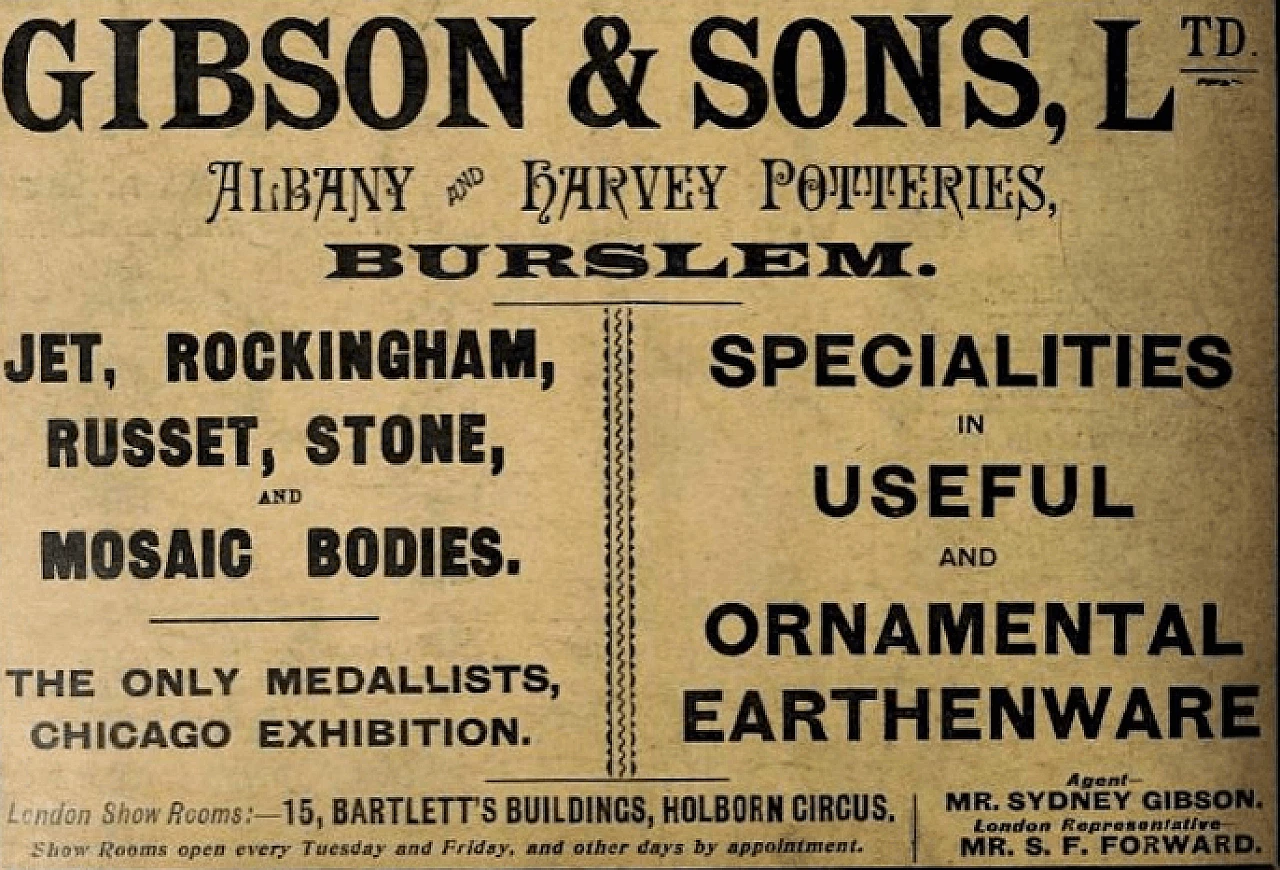
 SILVER Seller in Prato, Italy
SILVER Seller in Prato, Italy






.png)




